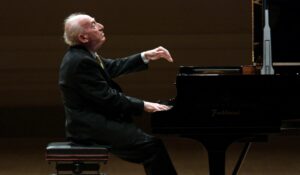Piano Forum
 |
Remembering the great Maurizio Pollini Legendary pianist Maurizio Pollini defined modern piano playing through a combination of virtuosity of the highest degree, a complete sense of musical purpose and commitment that works in complete control of the virtuosity. His passing was announced by Milans La Scala opera house on March 23. Read more >> |
Pages: [1] Go Down
Pages: [1] Go Up
For more information about this topic, click search below!
 Topic: Glenn Gould, Bach, Non-Legato, HELP???
Topic: Glenn Gould, Bach, Non-Legato, HELP???